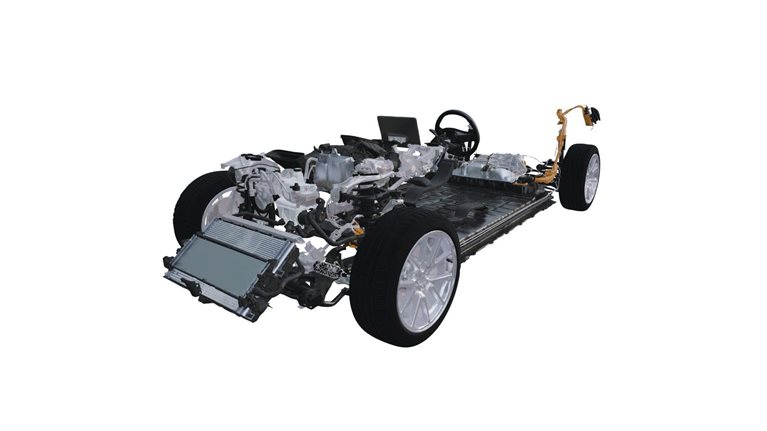Four major trends—autonomous driving, connectivity, electrification, and shared mobility (ACES)—are transforming the automotive industry worldwide. Within China, these changes are having a dramatic impact on consumer preferences for vehicles. These changing preferences, in turn, could reshape the country’s automotive market over the next five to ten years. To gain more insight about the consumer perspectives in this critical market, we conducted the McKinsey China Auto Consumer Insights 2023 survey. Six major insights emerged:
- Trading up continues to be popular, but some consumers are making more rational choices about their next car purchase. High-priced models continued to increase their market share because, as shown in our survey, more than half of Chinese consumers are interested in vehicle trade-ups. At the same time, an increasing number of consumers are making more rational choices because OEMs have introduced many cost-effective models with high-quality features, giving buyers more options with better overall value.
- Multinational brands no longer command premium prices, and changes in the overall brand landscape are accelerating. Chinese consumers have long been willing to pay a premium for foreign brands, but this attitude is shifting as changes within China’s brand landscape accelerate. The survey also revealed that brand awareness differs for electric vehicles (EVs) and traditional internal-combustion-engine (ICE) vehicles. Four of the five most recognizable EV brands are Chinese, while the most recognizable ICE brands are still foreign brands.
- Customer loyalty to EVs is emerging, and focusing on customer operations is essential for OEMs. EV customers are more inclined to consider vehicle performance, rather than regulatory incentives such as free license plates, when purchasing a vehicle. Also, EV owners are highly satisfied with the overall performance of their vehicles, which demonstrates great growth potential for EV penetration. OEMs that want to build a sustainable, long-term advantage in the Chinese market must also strengthen all aspects of their customer operations.
- OEMs must offer omnichannel operations and focus on improving the customer experience. Consumers have shown significant enthusiasm for online car sales, but offline touchpoints remain indispensable. EV disruptors have achieved high customer satisfaction through omnichannel direct-to-consumer (DTC) models, but they still need to improve their after-sales services.
- Software monetization is reaching maturity, and OEMs must continue upgrading their business models. Consumers are enthusiastic about various smart-vehicle technologies, but their willingness to pay varies significantly by feature. In response, OEMs need to rapidly implement and upgrade targeted payment approaches for different features to optimize their business models.
- The concept of low-carbon cars is emerging, and consumers have shown willingness to pay extra. Low-carbon cars can help reduce greenhouse gas (GHG) emissions during all phases of the vehicle life cycle, beginning with the procurement of raw materials for manufacturing and extending through day-to-day operations. Consumers are increasingly aware of the concept of low-carbon cars and some customer segments, such as those who have high incomes and are environmentally conscious, show a greater willingness to pay for them.
Together, these trends will help promote even greater technological advances and encourage the development of new business models. This report shows how automotive OEMs can take advantage of these shifts and build strategies that position them for success in the Chinese market.
Summary: Implications for OEMs
Based on our survey insights, OEMs may benefit from implementing a targeted business transformation that focuses on their responses to three rapidly evolving trends:
- The shift to electrification is irreversible. Electrification in the Chinese market is ongoing and permanent. OEMs that hesitate to accept this change may become significantly less competitive over the medium- to long-term.
- Brand strategies are evolving. For many years, Chinese consumers have been willing to pay premium prices for multinational brands. Today, however, multinational OEMs may need to adjust their pricing strategies as their brand shares decrease and Chinese consumers become increasingly reluctant to pay a premium for their vehicles. Traditional multinational OEMs may benefit most from accelerating the search for a new pricing “anchor” in the era of smart EVs. Meanwhile, Chinese OEMs should primarily focus on reinforcing traditional selling points, such as advanced technology options and an extensive range of features. They might also consider strategies to increase the emotional appeal of their brands while gradually narrowing the price gap with multinational brands.
- Omnichannel operations are more important. In the era of traditional ICE vehicles, OEMs paid more attention to near-term sales targets than long-term customer satisfaction, but this strategy may not deliver the same benefits as smart EVs gain market share. OEMs may phase out conventional distribution models for various reasons, including a lack of interest among younger consumers for traditional retail and service models and the success of EV disruptors with DTC models. As they evolve, OEMs must accelerate their omnichannel operations to ensure consistent online and offline experiences. They should also explore distinctive strategies to enhance customer satisfaction.
In addition to these three trends, which are most likely to have an impact over the near term, our survey suggests that three accelerating shifts will have a clear impact in the medium-to-long term:
- Value creation over the full vehicle life cycle is becoming more critical. In addition to traditional business areas, such as car sales, financing, and after-sales, OEMs urgently need new business models. Software subscriptions, DTC models, and other innovative solutions could create value if OEMs can quickly identify possible monetization opportunities, develop action plans, and move to implementation.
- Acceptance of low-carbon cars is growing. As policy makers increasingly mandate decarbonization targets, OEMs are making the development of low-carbon cars a key strategic priority. Chinese consumers are gradually becoming more likely to consider such vehicles and are demonstrating a higher willingness to pay for them, which creates favorable conditions for OEMs to develop low-carbon cars.
- Smart features are becoming major differentiators for EVs. Many OEMs have relied on key components—the engine, gearbox, and chassis—to differentiate their ICE vehicles in the Chinese market. But in the era of EVs, it is becoming more difficult to create differentiated mechanical specifications. When purchasing premium EVs, Chinese consumers are increasingly likely to make smart features, such as ADAS, connectivity, and voice control, a core consideration. OEMs must respond to this trend by accelerating the launch and update of smart functions, either independently or through codevelopment with technology companies.
Based on the above three major trends and three major shifts, we believe the following four suggestions may help all OEMs that aspire to win in the Chinese automotive market:
- Reshaping and repositioning the brand. OEMs now have multiple brand offerings and product choices for Chinese consumers, and it is becoming increasingly difficult to stand out in this crowded market. To attract consumer attention and develop their brand images, OEMs should strive for differentiation—for example, by offering EVs with smart features and a low carbon footprint. They could also distinguish themselves by improving the overall customer experience.
- Balancing investments and returns for EVs and smart features. EV manufacturers cannot afford to lose money over the long term. To enhance profitability, they should explore multiple levers, including those related to design-to-cost, design-to-value, and agile R&D. They could also identify core control points on tech stacks and build relevant capabilities. Such actions are critical now because only profitable companies will be able to make sustainable, long-term investments in the smart-EV field.
- Developing omnichannel operations that integrate online and offline services. Many OEMs want to implement omnichannel operations and integrate their online and offline offerings. Accomplishing this goal will require drastic changes to all aspects of their organizations, including the overall vision, corporate culture, organizational structure, KPIs, and daily operations. OEMs should also develop tailored omnichannel mechanisms that consider their unique needs and capabilities, rather than simply imitating others.
- Pursuing new business models. In the near term, OEMs can explore new business models by collaborating with other leading companies along the value chain. Over the longer term, they must build their internal capabilities and establish control over their own business models.
The age of ICE vehicles in China is fading, and the era of smart EVs has arrived. As consumer mindsets change and new technologies advance, many of the so-called golden rules are being subverted and reshaped. Facing such drastic changes, some OEMs have already left the market and others may follow. Simultaneously, new players will emerge, potentially increasing competition. The companies most likely to succeed are those that are willing to fully transform their products, brands, operations, organizational structures, and more.


